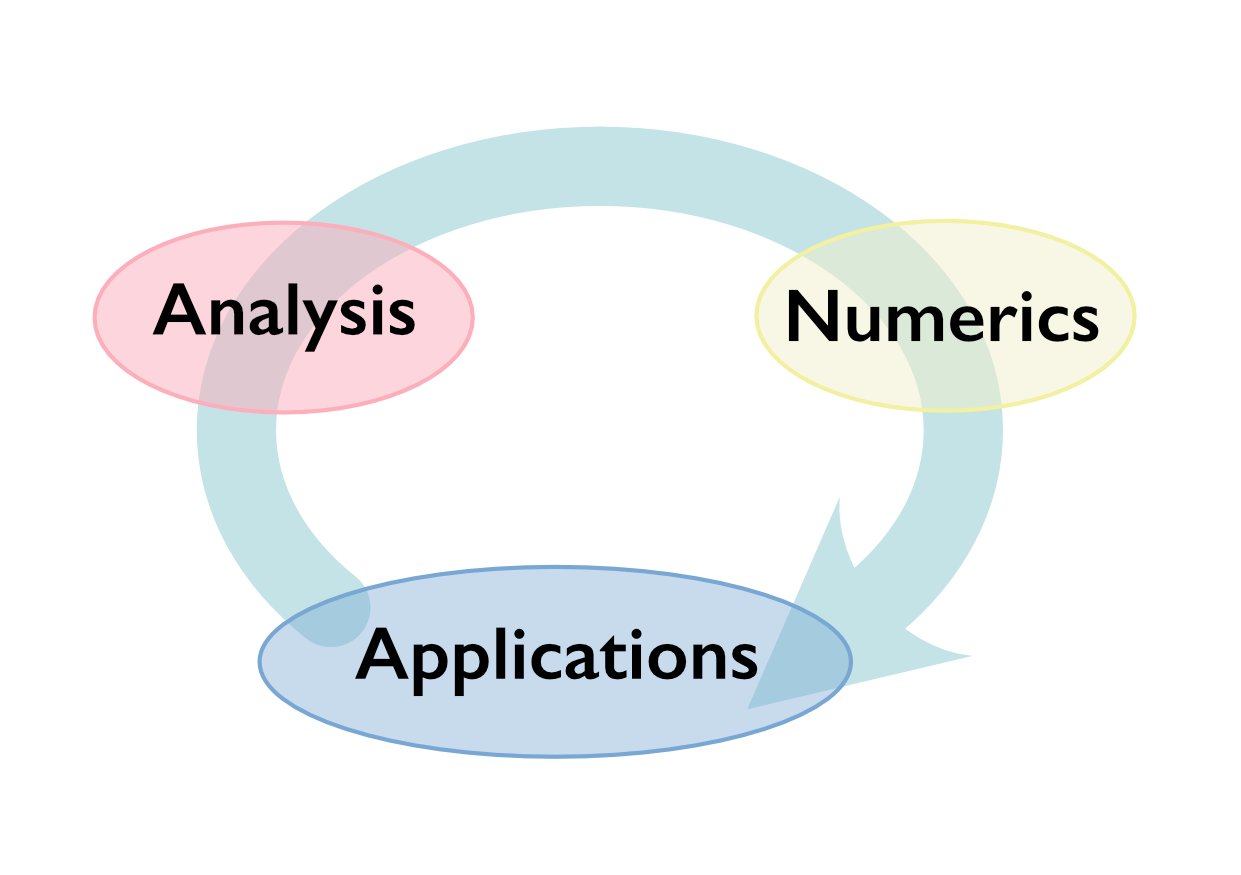Higher Analysis and Numerics#
Course participants#
The ZHAW is one of the leading universities of applied sciences (Fachhochschule) in Switzerland. It offers teaching, research, continuing education and other services that are both practice-oriented and science-based.
The participants of the course are students of the School of Engineering and typically study
The students have the basic mathematical knowledge in linear algebra, analysis and numerics with a focus on application. The course is intended as preparation for a Master’s degree course (university, university of applied sciences) or as a specialization for students interested in mathematics.
Organization of the course#
In addition to an introduction to functional analysis and modeling with partial differential equations (PDE), numerical methods for solving PDEs are developed. Accompanying applications from engineering practice are presented.

Fig. 1 Organization of the course#
Content of the course#
Analysis
Introduction to functional analysis
Basic concepts
Function spaces
Calculus of variations
Differentiability in function spaces
Weak solutions
Introduction to partial differential equations
What is a partial differential equation?
Linear partial differential equations
Classification PDE 2nd order
Modeling
Stationary diffusion processes
Transient diffusion processes
Hyperbolic equation
Numerics
Finite element method
Introduction in one dimension
Finite element procedure
Nodal finite elements (2d, 3d)
Finite elements of higher order
Linear equation solver
Matrix structure examples
Direct equation solvers
Iterative equation solvers
Practical applications (projects)
Stationary temperature field
Electrostatic field
Magnetostatic field (2d)
Mechanical field
Flow field
Transient temperature field
Acoustic field
Software#
The program includes the implementation of numerical methods on the computer. In particular, students also learn about modern digital techniques for product optimization.





